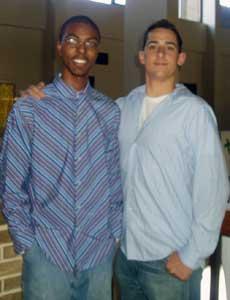By Laura Rodell and Julia Matias
After a four-week run, Student Government elections concluded last Thursday night with presidential and vice-presidential candidates Peter DiSilvio and Simon Duncanson winning the plurality of the votes.
The DiSilvio-Duncanson ticket pulled in 751 votes, nearly 200 more than candidates Joe Napoli and Tom Kopec, who came in second place with 557 votes. Candidates Nathan Yadgar and Russell Akiyama pulled in 489 votes, while Justin Meyers and Chris Nicolia had 100 votes.
For the first time students cast votes for candidates and referenda online, as opposed to inside voting booths.
With almost a 1,000 more students voting than last year, this year’s elections brought in a total of 1,934 votes, said Adam Doyno, the SGA Rules Committee chair and Elections Committee vice-chair.
“The voting system will be a staging ground for something bigger next year,” said Doyno.
While the new online format attracted more student voters, it also allowed candidates and their supporters to circumvent SGA rules against campaigning near voting sites.
“There were unanticipated problems like wireless voting, where people were taking their laptops to people around campus and pressuring them to vote, watching them and maybe seeing their password,” Doyno said.
Students, however, weren’t bothered by the aggressive voting style.
“I feel like because voting stations aren’t in the Student Center anymore and not right in students’ faces, students may have a harder time remembering to vote,” said Junior Art History and Italian major Anna Piazza.
A total of 55 complaints were logged over the two-day voting span, Doyno said. All but one turned out to be a case of student error, such as searching for the voting link in the University’s My Portal page instead of in Blackboard.
At colleges and universities nationwide the voting booth is rapidly being eclipsed by the more efficient and ubiquitous Internet.
Given some clear advantages of online voting – such as the fact that it can be done from anywhere and at anytime of day or night – turnout among University students was expected to reach an all-time high.
Having been discussed in SGA since the past year, plans for an online voting system were set into motion two months ago, when Paul Carson, the University’s Instructional Technology Facilitator, designed a new script for the University’s Blackboard site that would enable students to cast votes through a menu link.
“Hofstra is listed as one of the top wired campuses in the country and this is just another reason for that,” said Carson.
Candidates also said they were pleased with the new process.
“It increased voter turnout and helped SGA learn more about what students want. There were some flaws, but that has to be expected when transitioning, say to the Internet, and they were very minor and can be easily fixed next year.”
“Overall, I feel this was the smoothest election we have had since I’ve been here,” added Grant Parker, SGA vice-president and Elections Committee Chair.
Now beyond the uncertainty associated with introducing any major change, the 11-member SGA Elections Committee is readying for Senate elections this week.
“The first time there are always going to be unforeseen problems and loopholes, but the Senate is an ever-growing and ever-learning body and will take information from this election into account to improve the next,” Doyno said.
Though it emerged in the 11th hour of this election, SGA leaders are working to resolve the issue well before it has the chance to upset future elections.

SGA president Peter DiSilvio (right) and vice president Simon Duncanson win the election with 751 votes.
